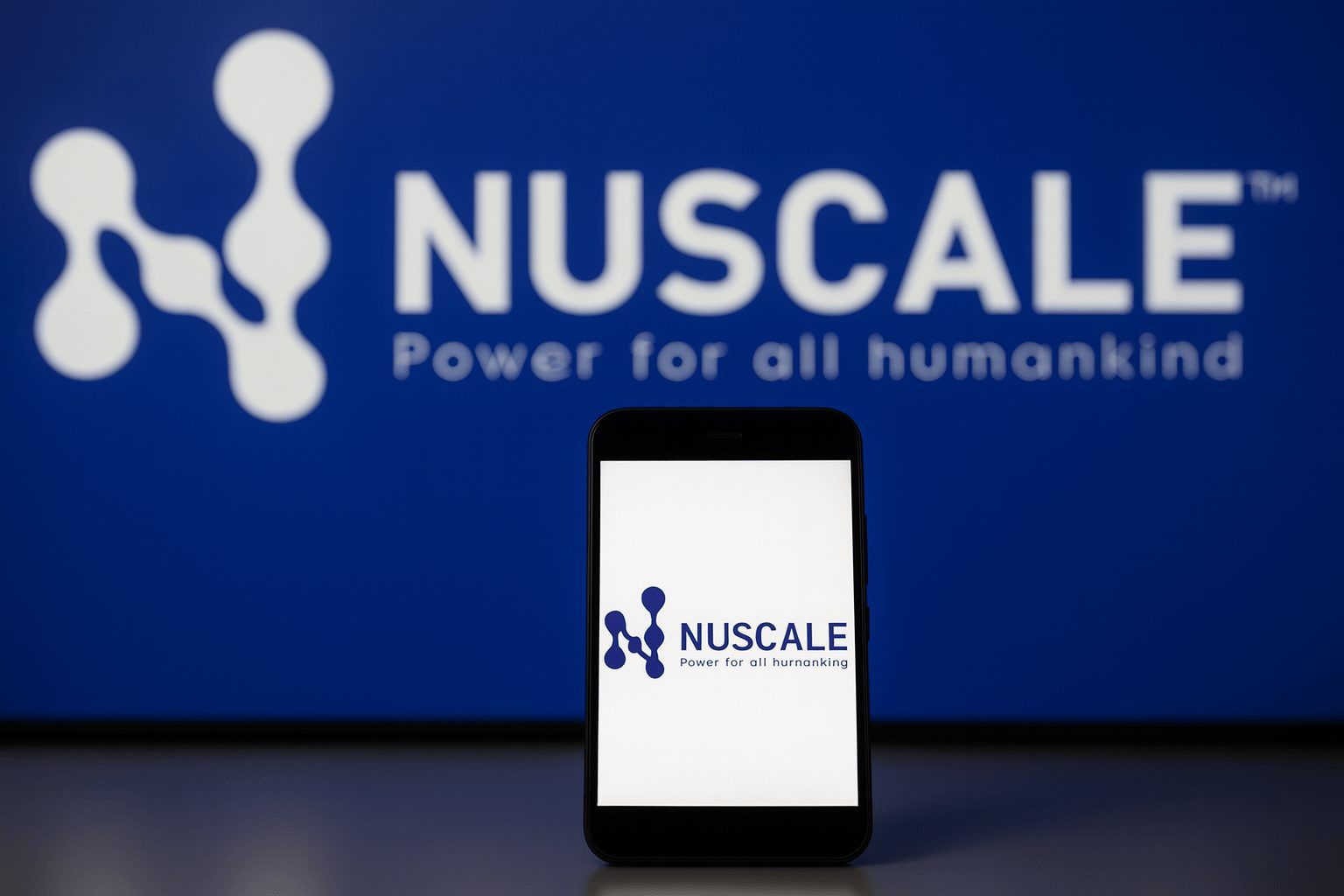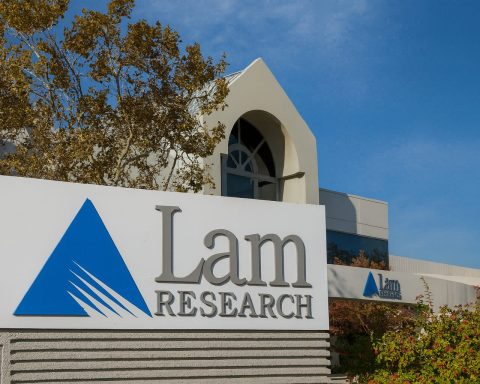Date: November 22, 2025
Key takeaways
- NuScale Power (NYSE: SMR) closed around $18.60 on Friday, slipping about 0.6% on the day as trading in the stock remains extremely volatile.
- The move caps a sharp sell‑off in November after a big Q3 2025 earnings miss, with EPS of –$1.85 vs. a small loss expected and revenue of about $8.2 million vs. roughly $11 million forecast. [1]
- Despite weak near‑term financials, NuScale has secured landmark deals, including a 6 GW small modular reactor (SMR) deployment program with the Tennessee Valley Authority (TVA) via partner ENTRA1 Energy, and progress on a first plant in Romania. [2]
- Regulators have granted design approval for NuScale’s uprated 77 MWe reactor, keeping it the only U.S. SMR designer with an approved NRC design. [3]
- Fluor, NuScale’s long‑time strategic shareholder, has agreed to convert and gradually monetize its remaining stake by mid‑2026, adding an overhang of potential share supply. [4]
- After a more‑than‑145% surge in 2025 through late October, the stock has pulled back sharply, and several analysts — including Bank of America — have warned that earlier valuations reflected “unrealistic expectations” around SMRs and AI data centers. [5]
Note: This article is for information only and is not investment advice.
NuScale Power stock today: price, performance and volatility
As of the close of trading on Friday, November 21, 2025, NuScale Power Corporation’s share price stood at about $18.60, with intraday trading between roughly $17 and $19 on heavy volume. [6]
On Thursday, November 20, the stock dropped around 11.7% to roughly $18.66 on volume more than double its average, leaving NuScale well below its 50‑ and 200‑day moving averages, according to MarketBeat’s recap of the session. [7]
These swings come on the heels of an even steeper slide: NuScale is reported to have fallen nearly 20% after posting wider‑than‑expected Q3 losses and announcing a roughly $750 million equity raise, a combination that raised investor concerns about dilution and profitability. [8]
Yet even after the correction, NuScale has had a remarkable year: Reuters noted in October that the shares were up more than 145% year‑to‑date, boosted by excitement over small modular reactors as a way to power energy‑hungry AI and defense infrastructure. [9]
In short, SMR has become a classic “high‑beta” story stock: big upside moves when sentiment is hot, and equally dramatic pullbacks whenever the narrative is challenged.
Why NuScale stock sold off after Q3 2025 earnings
The latest leg down in NuScale Power stock is closely tied to its third‑quarter 2025 results and the way it’s choosing to fund growth.
A big earnings miss
For Q3 2025, NuScale reported: [10]
- Earnings per share (EPS): –$1.85
- Far worse than analyst expectations for a loss of around $0.11–0.15 per share. [11]
- Revenue: about $8.24 million, mostly from engineering services and project work
- Below consensus estimates of roughly $11–11.3 million.
A detailed breakdown from Chartmill highlights that the earnings miss was driven largely by a huge spike in general and administrative (G&A) expense, not just ongoing operations: [12]
- G&A expenses jumped by over $500 million year‑on‑year, mainly due to a one‑time $495 million charge tied to “Milestone Contribution 1” under NuScale’s partnership agreement with ENTRA1 Energy.
- R&D spending actually fell modestly, as engineering staff shifted from pure R&D to revenue‑generating commercial projects.
Investors often “look through” big one‑time charges — but in NuScale’s case, the headline loss and negative margins reinforced a central concern: the company is still far from profitability and is funding its growth mainly through equity issuance.
Capital raising and dilution worries
NuScale has focused on strengthening its balance sheet to support the massive upfront costs of nuclear project development:
- The company ended Q3 with about $754 million in cash, cash equivalents and investments. [13]
- During the quarter, it sold roughly 13.2 million shares via an at‑the‑market offering, raising about $475 million in gross proceeds. [14]
- Separate analysis from Simply Wall St notes a $750 million equity offering, which contributed to the stock’s sharp post‑earnings decline. [15]
For a pre‑commercial nuclear company, this bolstered cash pile is a positive: it helps fund long lead‑time projects and supports investor confidence that NuScale can reach first deployment. But for existing shareholders, the flipside is dilution — and the market has been quick to punish any sign of additional share supply.
MarketBeat also points to heavy insider selling over the last 90 days and notes that the consensus analyst rating sits around “Reduce” with an average price target near $37.50 (set when the stock traded far above today’s level). [16]
Fluor’s exit plan: a new overhang on NuScale shares
One of the most important recent developments for NuScale stock is the stake monetization agreement with Fluor Corporation, NuScale’s long‑time strategic partner and major shareholder.
According to a joint announcement and subsequent coverage: [17]
- Fluor will convert its remaining Class B units in NuScale Power LLC into Class A common stock.
- It plans to gradually sell down this stake through the second quarter of 2026, following mutually agreed volume limits intended to avoid crashing the share price.
- Fluor has also agreed to support an increase in NuScale’s authorized share count, reduce certain rights under a tax receivable agreement, and accept limits on NuScale’s equity issuance through February 2026.
From NuScale’s point of view, this agreement simplifies its capital structure and signals that the company is ready to stand more independently. But for NuScale shareholders, the message is mixed:
- On one hand, activist investor Starboard Value has argued that Fluor’s NuScale stake represents a large store of value, pushing for ways to unlock it. [18]
- On the other, Fluor’s planned monetization introduces a clear overhang: large blocks of stock will be coming to market over the next 18 months, potentially capping rallies unless fresh demand appears.
This overhang, layered on top of NuScale’s own ATM program and prior offerings, helps explain why equity‑sensitive investors have remained cautious.
Strategic catalysts: TVA mega‑project, ENTRA1 partnership and AI data center demand
The bullish case for NuScale Power is driven less by today’s income statement and more by its project pipeline and technology positioning.
TVA and ENTRA1: a 6‑gigawatt SMR program
In November, NuScale highlighted what it calls “the largest SMR deployment program in U.S. history”: ENTRA1 Energy, NuScale’s exclusive global commercialization partner, signed a landmark agreement with the Tennessee Valley Authority (TVA) to deploy up to 6 gigawatts of NuScale SMR capacity across TVA’s seven‑state service territory. [19]
NuScale’s Q3 press release describes this program as a major validation of its technology and business model, with potential applications including AI data centers, mining, and semiconductor manufacturing — industries hungry for reliable, carbon‑free baseload power. [20]
Separately, NuScale has touted ENTRA1’s $25 billion agreement to deploy large‑scale power infrastructure projects across the United States, with NuScale’s SMR technology at the core. [21]
While these deals are not yet revenue engines — and still depend on detailed siting, permitting, and financing — they are central to the long‑term growth story that many investors are betting on.
Romania, Poland and the European opportunity
Internationally, NuScale is working to turn early agreements into concrete projects:
- The company is advancing front‑end engineering and design (FEED) work for the RoPower SMR plant in Doicești, Romania, envisioned as a six‑module NuScale facility. [22]
- Reuters has reported that NuScale has signed deals to deploy reactors in both Romania and Poland, although all U.S. SMR developers face complex regulatory and supply‑chain challenges in Europe and strong competition from players like Rolls‑Royce. [23]
These European projects are still at early stages, but if NuScale can move one or two large‑scale deployments toward final investment decisions (FIDs), they would provide stronger evidence that the SMR business model can work commercially.
Regulatory milestones: NuScale’s 77 MWe design wins NRC approval
NuScale’s technology remains one of its biggest differentiators in the crowded SMR field.
In May 2025, the U.S. Nuclear Regulatory Commission (NRC) approved NuScale’s uprated 77 MWe reactor design, building on its earlier certification of a 50 MWe module. [24]
Key points:
- NuScale remains the only U.S. company with an NRC‑approved SMR design, something both the company and independent observers highlight as a competitive advantage. [25]
- The newer 77 MWe design is meant to improve plant economics and performance, allowing utilities and data‑center operators to scale from four modules (308 MWe) to as many as twelve (924 MWe) in a single plant. [26]
In public interviews, NuScale co‑founder and CTO José Reyes has emphasized that this regulatory milestone dramatically shortens deployment timelines: developers now need only a site‑specific construction and operating license, rather than a full design approval from scratch. [27]
At the same time, analysts and nuclear policy experts warn that:
- First‑of‑a‑kind (FOAK) nuclear projects are notoriously challenging, with a long history of cost overruns and delays. [28]
- SMR vendors in Europe will still face country‑by‑country licensing, fragmented regulations, and tight engineering labor markets, which could slow the pace of rollout. [29]
So while NRC approval is a real moat, it is not a guarantee that early NuScale projects will be built on time or on budget.
Nuclear, AI and the hype question: what are analysts saying?
NuScale’s 2025 share‑price surge has been tightly linked to two themes: clean energy and AI data centers.
In an interview with Oregon Public Broadcasting, Reyes described “overwhelming interest” from data‑center operators, noting that power requests have jumped from tens of megawatts to 1,000–2,000 megawatt scale, making nuclear one of the few realistic ways to supply continuous, low‑carbon power at that level. [30]
That narrative has clearly resonated with the market — perhaps too much. A MarketWatch summary of Bank of America’s recent research flagged both NuScale and Oklo as beneficiaries of intense AI‑driven enthusiasm, but warned that their stock prices had moved ahead of realistic deployment timelines and used “unrealistically low” discount rates in valuation models. [31]
For NuScale specifically, BofA:
- Downgraded the stock to “Underperform” from “Neutral”.
- Cut its price target from $38 to $34 when shares were trading substantially higher than today. [32]
Separately, valuation platform AlphaSpread estimates an “intrinsic value” around $2.43 per share under its base‑case cash‑flow assumptions, implying a large premium at current prices — though such model outputs are highly sensitive to long‑term deployment and discount‑rate assumptions. [33]
The message from the sell‑side and independent valuation tools is broadly consistent:
NuScale may have a powerful strategic story, but the market has already priced in a lot of future success — and that makes any stumble brutally painful for shareholders.
Key risks for NuScale Power investors
Before treating NuScale as a straightforward “nuclear plus AI” growth play, investors should be aware of several major risk factors:
- Execution and project risk
- NuScale has no SMR plants yet in commercial operation; all major projects are still in development or early engineering phases. [34]
- The company’s earlier flagship project with a Utah municipal power group was canceled in 2023 after cost escalation and insufficient customer subscriptions, underscoring how fragile multi‑stakeholder nuclear deals can be. [35]
- Regulatory and political risk
- Although the NRC has approved NuScale’s 77 MWe design, each plant still needs site‑specific licensing, and international projects must navigate separate national frameworks. [36]
- Public perception of nuclear, waste‑management concerns, and shifting government priorities could all affect timelines.
- Financing and dilution
- Large nuclear projects require billions in capital, often involving complex public–private partnerships, sovereign support, or long‑term power purchase agreements.
- NuScale has relied heavily on equity issuance to build its cash cushion, and Fluor’s planned sell‑down adds further potential supply of shares to the market. [37]
- Competition
- NuScale faces rivals across the SMR landscape, from U.S. firms like TerraPower and X‑energy to European efforts led by Rolls‑Royce and others. [38]
- While NuScale has a first‑mover advantage on design approval, competitors may catch up or focus on simpler, cheaper designs.
- Valuation and sentiment risk
- The stock’s enormous run‑up earlier in 2025 shows how sensitive SMR names are to narrative shifts, macro risk appetite, and AI‑related hype cycles. [39]
NuScale Power stock: who might consider it now?
Only you (or a qualified adviser who understands your situation) can decide whether NuScale belongs in your portfolio. But the current setup tends to appeal to specific types of investors:
- High‑risk growth and thematic investors
- May be attracted by NuScale’s unique regulatory position, landmark TVA/ENTRA1 program, and potential to power AI data centers and heavy industry with carbon‑free baseload power. [40]
- Must be comfortable with large drawdowns, frequent capital raises, and a long, uncertain path to positive free cash flow.
- Value‑oriented or income investors
- Are likely to be more skeptical today, given:
- The lack of near‑term earnings visibility,
- Ongoing dilution and Fluor’s exit overhang, and
- Independent models suggesting the shares still trade at a premium to conservative intrinsic‑value estimates. [41]
- Are likely to be more skeptical today, given:
For all investor types, some key milestones to watch in the months ahead include:
- Concrete progress on binding contracts and final investment decisions for the TVA program and RoPower Romania. [42]
- Updated capital‑allocation and funding plans, especially any new equity or debt financing.
- Regulatory developments for SMRs in Europe, the U.S., and other regions, particularly any moves that shorten licensing timelines. [43]
- NuScale’s Q4 2025 and 2026 guidance, which may clarify how quickly revenue could scale from engineering services to full plant deployment.
Bottom line
As of November 22, 2025, NuScale Power stock sits in an uneasy middle ground:
- The company has real technological and regulatory achievements, an expanding project pipeline, and a credible role in the emerging ecosystem of nuclear‑powered AI data centers and decarbonized heavy industry. [44]
- At the same time, it faces significant execution, financing, and valuation risk, and its most recent quarter reminded investors just how expensive and uncertain first‑of‑a‑kind nuclear development can be. [45]
For now, NuScale Power (SMR) remains a high‑conviction, high‑volatility bet on the future of small modular reactors rather than a stable, earnings‑driven utility‑style investment.
If you’re considering the stock, it’s worth stress‑testing your thesis against both sides of the story — the transformational upside if NuScale’s projects scale as hoped, and the material downside if deployment is slower, costlier, or more limited than the market once imagined.
References
1. www.chartmill.com, 2. www.nuscalepower.com, 3. www.nuscalepower.com, 4. www.businesswire.com, 5. www.reuters.com, 6. www.chartmill.com, 7. www.marketbeat.com, 8. simplywall.st, 9. www.reuters.com, 10. www.chartmill.com, 11. www.chartmill.com, 12. www.chartmill.com, 13. www.nuscalepower.com, 14. www.nuscalepower.com, 15. simplywall.st, 16. www.marketbeat.com, 17. www.businesswire.com, 18. www.reuters.com, 19. www.nuscalepower.com, 20. www.nuscalepower.com, 21. www.nuscalepower.com, 22. www.nuscalepower.com, 23. www.reuters.com, 24. www.nuscalepower.com, 25. www.opb.org, 26. www.opb.org, 27. www.opb.org, 28. www.opb.org, 29. www.reuters.com, 30. www.opb.org, 31. www.marketwatch.com, 32. www.marketwatch.com, 33. www.alphaspread.com, 34. www.opb.org, 35. www.opb.org, 36. www.reuters.com, 37. www.nuscalepower.com, 38. www.reuters.com, 39. www.reuters.com, 40. www.nuscalepower.com, 41. www.chartmill.com, 42. www.nuscalepower.com, 43. www.reuters.com, 44. www.nuscalepower.com, 45. www.chartmill.com







